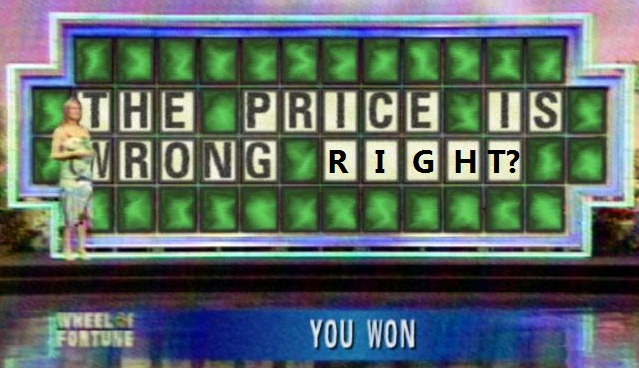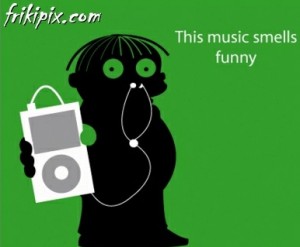Music Marketing Matters is a weekly feature that delivers ideas, case studies, and actionable advice for artists to market their music more creatively. For more on its inception, click here.
Price is a key component in the marketing mix, with music marketing being no exception. And yet, for the past decade, those who control a majority of the pricing mechanisms in the recorded music business have clung on to unfeasible price points for their outdated product.
Music Price Points: A State of Flux
Historically, the price of a standard, single CD album release could be as high as $18. Most leveled out between $12-15, but the larger retailers could and would push the price to that upper breaking point. Moreover, if music fans couldn’t find the CD they wanted so badly readily accessible in their area, they would pay those prices. Supply and demand: limited supply, rampant demand.
As we all know by now, MP3′s changed all of that. A price point of $18 (or more) nowadays represents only one of two things:
1) A super-deluxe edition of a release, bursting with physical extras and bonus content or,
2) A massively out of touch retailer who will shortly be shuttering their music section.
Manufacturing plastic discs is more expensive than moving another copy of a digital file. When the marginal cost of a sale tends towards zero, it becomes impossible to justify applying the pricing mechanisms of physical products to the now dominant digital sales environment. At the other end of the scale, enormous artists like Lady Gaga and Radiohead offer their releases for cents, or nothing, causing further confusion in the marketplace.
What is the true value of digital music?
Setting the Right Price

The right price is, of course, the minimum amount you can set that both elicits an impulse to buy and provides you with some level of profit. Set too high and the former takes a hit, limiting sales. Set too low and your music becomes a ‘loss leader’, with you eating the cost of creating the music in the hope of longer term success.
Price setting for music is a lot tougher than it sounds and has no clear rules.
Follow the industry standard of $7.99 to $9.99 and the chances are you price out a lot of potential new fans, unwilling to risk traditional amounts on what is an unknown quantity. Follow the recent trends towards budget pricing – $2.99 to $4.99 – and you have a much better chance of convincing newcomers to throw a few bucks in your direction, yet you now have to sell at least twice as many albums to hit the same amount.
What to do? In my opinion, this is where your creativity must come to the fore.
As we examined in last week’s ‘Diversify Your Product’, there is far more potential for your artistic offerings than just the music, so why not bring that to your marketing mix? Adding value with varied product offerings is one of the only ways to justify to your end buyer that their purchase decision satisfies. Ignoring the moral argument of art’s value to the world, which is for another day, this is a matter of psychology. Give your buyer a compelling reason to find the right price point and shell out their hard earned green.
Some suggested levels to guide your price setting:
- Entry level: Your lowest acceptable price. Bare bones, just the music (perhaps not even all of it, if you can stand to separate out tracks into smaller album ‘nuggets’), worth-a-shot pricing.
- Sweeten the deal: Add a dollar to the entry level, offer some simple yet intriguing extra. A bonus track, access to video content, insights into the making of the album. Given the small price increase, this is likely to be digital content and something that you can easily provide at little extra cost.
- Fans, friends, and family: As you move away from the entry level prices, your buyer in the mid-range is more likely to be the core of your audience. Good fans and your acquaintances who are happy to support your music at a more traditional price point, but the majority of whom will not be buying deluxe. Here you start to introduce physical products, if you can afford to do so, giving buyers the full release, art, and anything that you can relating to it. As this price point covers a lot of your audience, who might have different listening preferences, you will probably be offering several different product option at this level.
- Invest in art: Some can afford to spend more and will happily push the boat out just to give musicians they like that extra boost. If your highest price point is $9.99, though, that’s all they will be able to chip in. Offer your next package at $5 to $10 more, subject to the make up of your later pricing, and throw in some significant personal extras, such as handwritten lyrics, a personal video conference performance of the release, extra merchandise. This is the level at which you start to emphasize just how much difference this extra investment means to your career as a musician. You can also play around with quality of download from this point upwards. Being an audiophile may yet bounce back as a purchase consideration.
- Deluxe: Not everything from the recording industry’s past is a heinous assault on the wallet of fans, the deluxe expanded editions of albums being a case in point (those that came out at the same time as standard editions, of course). Some dedicated fans are truly interested in listening to acoustic versions, alternate takes, making of commentary, and all manner of other extras that cost you very little to offer, yet mean enough to others for you to achieve this upsell.
- Super Deluxe (and above): What ya got? Plan out as many additional product offerings as you can and go to work to satisfy those with money to burn and the passion to spend it on your work. Introduce packages with all available merchandise types, content extras, access to future performances, meet & greets… whatever you can stretch to that will give the buyer a truly special experience. Even if you get no takers, this is a relative value effect for those considering the lower price points that you have offered.
Over To You…
Pricing is more of an art than a science, so the creativity that you bring to offering a variety of price points will experience varying degrees of success. As ever, your contributions make the difference, so please weigh in with thoughts here in the comments section.
As an artist, what have you found to be the most compelling price points for those who buy your music? Were these acceptable to you as the creator?
As a fan, what price music? Would you pay more if your favorite artists offered a better product at a higher price?





.